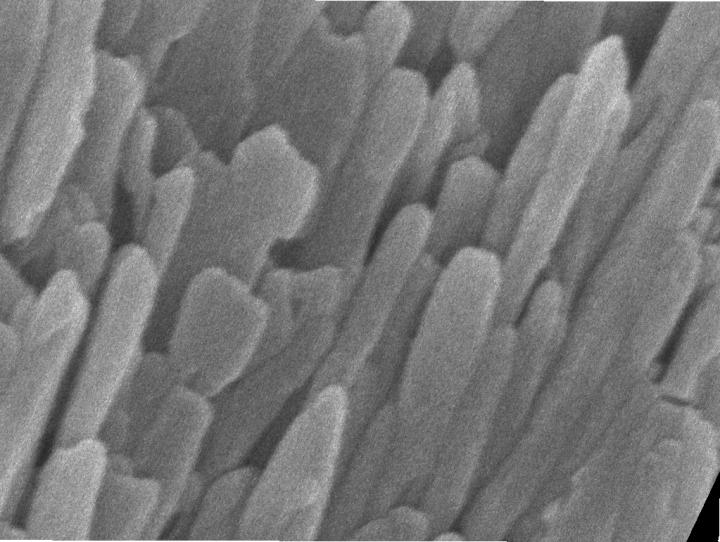Scientists develop synthetic enamel that’s stronger than natural tooth covering
New material has atomic, nanoscale, and micro-scale chemical organisation similar to natural enamel

Scientists have developed a synthetic form of tooth enamel that mimics the composition and structure of the biological hard outer coating on teeth and is also harder than the natural layer.
Tooth enamel – the thin outer layer of our teeth – is the hardest biological material in the human body, and is well known for its high stiffness, hardness, strength, and toughness.
It protects the teeth from several forces – including chewing, acidic food, and mouth bacteria – lasting over 60 years or more, and unlike bone is also not regenerated by the human body.
While humans have developed several new technologies to prevent and treat tooth decay for over a thousand years, researchers say methods to replace damaged enamel when it wears away are still lagging behind.
The natural tooth exhibits exceptional resistance to damage despite being only several millimetres thick – a product of its complex structure made up of mostly ultra-small nanowires of the calcium mineral hydroxyapatite.
It is strong but is also elastic due to its unique structure – akin to a tightly packed bunch of pencils in a box – making it extremely difficult for scientists over the years to mimic its natural structure.
In the new study, published in the journal Science last week, scientists engineered a synthetic enamel that consists of assembled hydroxyapatite nanowires intertwined with polyvinyl alcohol polymer chains.
The new structure has an atomic, nanoscale, and micro-scale organisation similar to natural enamel, according to the scientists, including those from Beihang University in Beijing.
They say the new material exhibited high stiffness, hardness, strength, viscoelasticity, and toughness, exceeding both the properties of enamel and similar previously manufactured materials.
When the researchers applied the enamel to human teeth and a range of other shapes and tested how it worked, they found that it was both strong and elastic, and it outperformed natural enamel in several tests.
While the new synthetic material still needs to be proven safe for human use to be mass-produced for commercial use, scientists say it could find applications in more than just dentistry.
They envision that the material could be used to build longer-lasting pacemakers for people with heart conditions, or to support and strengthen bones in those with severe osteoporosis.
“This multi-scale design is suitable for scalable production of high-performance materials,” they wrote in the study.
Join our commenting forum
Join thought-provoking conversations, follow other Independent readers and see their replies
Comments
Bookmark popover
Removed from bookmarks